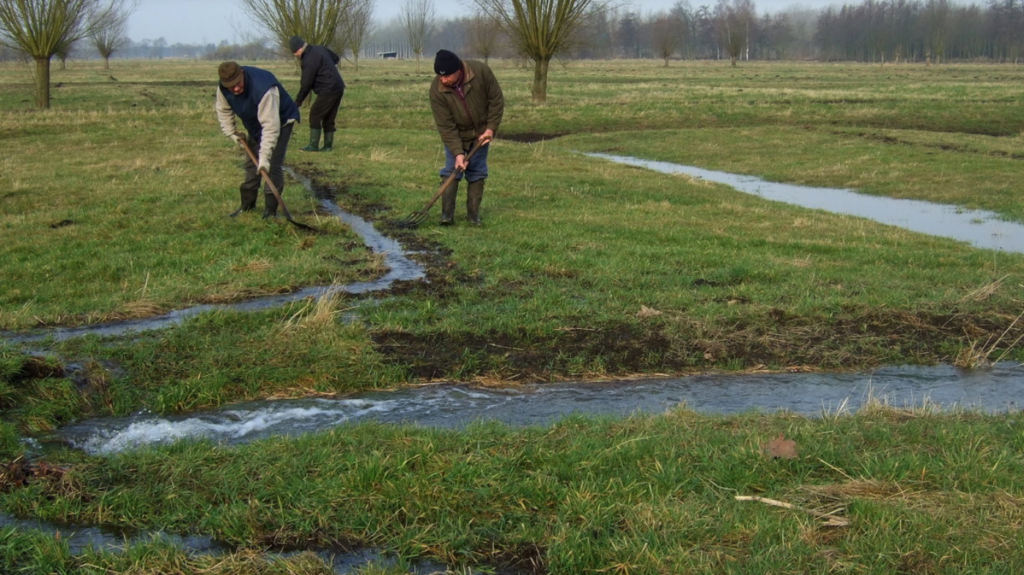A traditional Belgian irrigation technique has been recognised as an intangible cultural heritage of humanity by UNESCO, as it is a strong identity marker for practitioners.
On Tuesday 5 December, the knowledge and skills of traditional irrigation (abissage in Wallonia and witteren in Flanders) became part of UNESCO's intangible cultural heritage of humanity. This is the result of eight years' work by an international group: the dossier was submitted jointly by Austria, Belgium, Germany, Italy, Luxembourg, the Netherlands and Switzerland.
This type of traditional irrigation relies on the strategic use of gravity and ingenious hand-built systems, such as canals and ditches, to bring water from natural springs to fields and meadows. Practitioners choose specific days and periods to manually divert the water.
Small ditches are temporarily dug where the water is dammed up, creating an overflow. Thanks to this method of irrigation, minerals are deposited between the plant roots turning poor sandy soil into fertile meadows. It also helps to mitigate the effects of climate change at a local level, as it helps to raise groundwater levels and prevent flooding.
Specific vocabulary
Two canals are still in use in Belgium, representing the two traditional irrigation systems for meadows. One is the lowland irrigation on Vloeiweiden at the Grote Watering in Lommel, which is the largest reactivated, contiguous surface area of bedded fluvial meadows.
"Nowhere else in Europe is grassland irrigated on the same scale and only by volunteers in the old way," the Intangible Heritage group said. "Every year since 1979, a close-knit group of volunteers has worked together to irrigate the grasslands on the Grote Watering traditionally," the group working towards the UNESCO recognition noted. The other is a mid-mountain irrigation at Cierreux.

Grote Watering in Lommel. Credit: Immaterieel Erfgoed
To use this method sustainably, in-depth knowledge of the landscape, water flow and weather conditions is required, as well as close cooperation between those responsible for the distribution of the water and those maintaining the structures.
The practice is passed on to younger generations through observation and training, either by experienced members or scholars and institutions.
However, for practitioners, the century-old channel systems related to the practice are also strong identity markers: it is tied to a specific vocabulary and knowledge about the impact of the lunar cycle on water flow is also required. The beginning or end of the watering season is often accompanied by social gatherings and festivities.
The technique was inscribed on the list at the 18th session of the Intergovernmental Committee for the Safeguarding of the Intangible Cultural Heritage in Kasane, Botswana.

